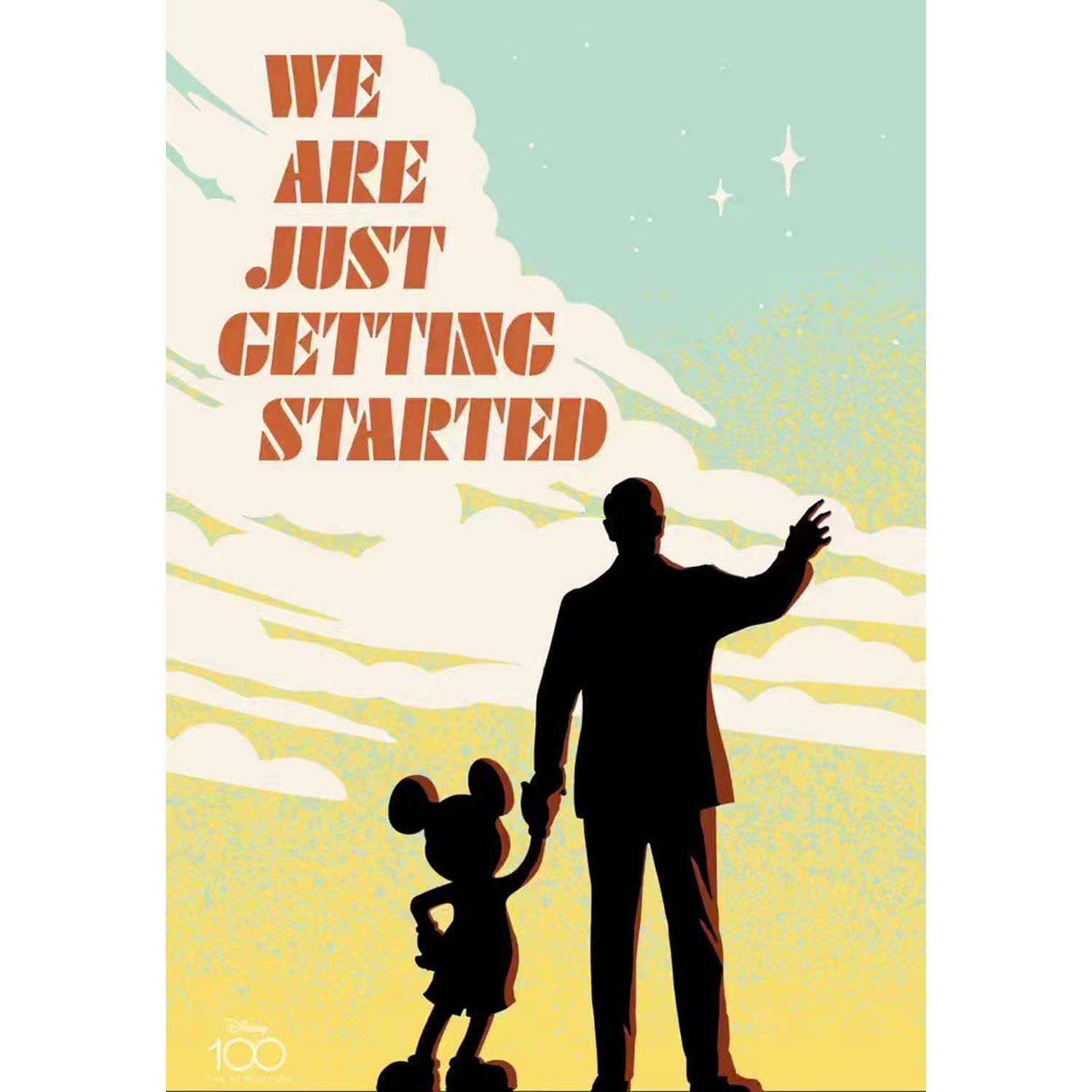The Color Code of Walt Disney “The Colors of the Kingdom”. Article by Guillaumette Duplaix, Editor of RUNWAY MAGAZINE, Keeper of Colorful Truths. Images Courtesy: Disney. Creative concept: Runway Magazine.
Some universes are not written in words but in hues. In Disney’s kingdom, color is not an accessory—it is law. Blue becomes destiny, red becomes memory, purple becomes menace. To watch a Disney film, to step into one of his parks, is to read a chromatic scripture: illuminated fairy tales where each shade carries the weight of myth.
Walt Disney created an entire universe shaped not only by characters and stories, but also by colors — a visual language that defines his films, theme parks, and even the memory of childhood itself.
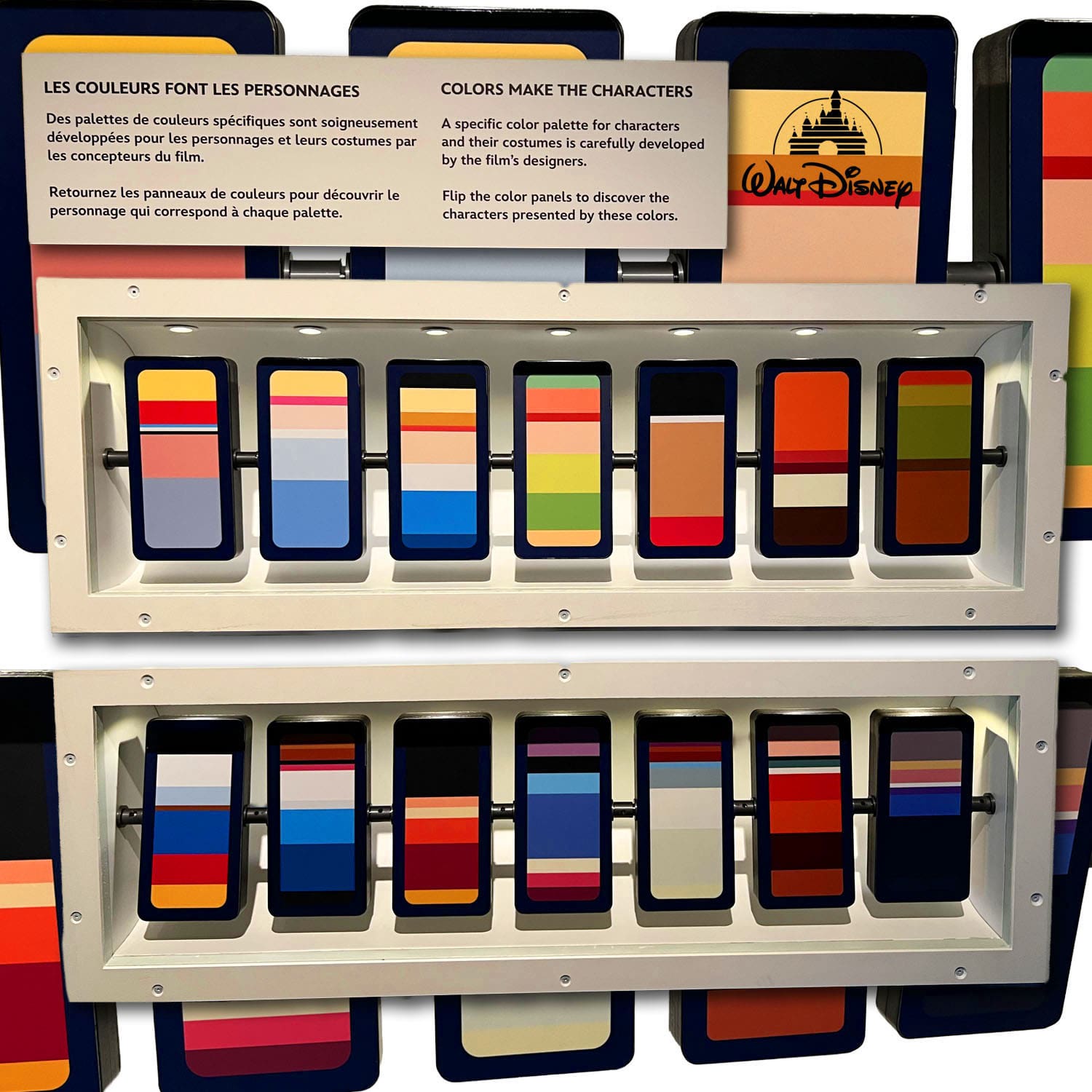
Disney Princesses & Their Colors
Since antiquity, color has been a language of devotion and power. The Virgin’s blue cloaked medieval altarpieces, emperors wrapped themselves in imperial purple, and the gilded halos of Renaissance paintings proclaimed transcendence. Walt Disney—whether instinctively or by design—borrowed this eternal grammar to shape his own cathedral of dreams. Animation became his stained glass. Every princess, every villain, every castle was inscribed with pigments that pre-existed them in cultural memory. The result is a legacy that transcends narrative: a chromatic code that binds imagination across generations.
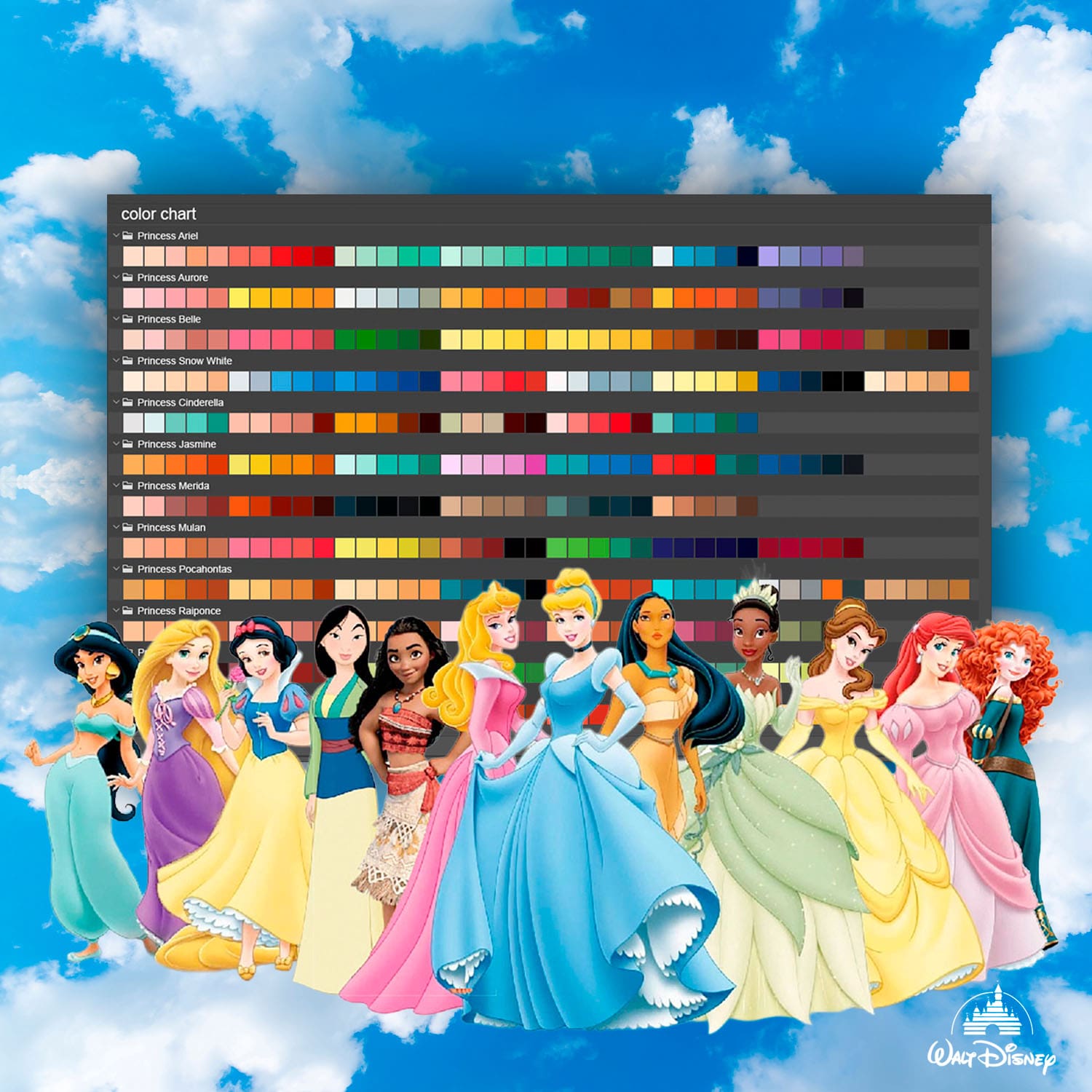
Disney’s heroines speak first in the language of light. Snow White, his first princess, is cloaked in red, yellow, and blue—a palette as innocent and symbolic as medieval manuscripts. Cinderella steps in silver and pale blue, the eternal promise of transformation. Aurora remains the battleground of pink and blue, a gown forever contested by magic. Ariel, with her flaming red hair and emerald tail, embodies both rebellion and vitality. Belle’s golden dress glows like wisdom turned into daylight; Jasmine’s turquoise and gold speak of sovereignty and freedom; Pocahontas wears the earth itself, browns and ochres of strength and ancestry; Mulan is marked in crimson and jade, balancing honor and duality; Tiana glimmers in green, evoking growth and renewal; Rapunzel radiates in lavender, Merida in untamed red, Moana in corals and ocean blues. These colors are not mere costumes but philosophies stitched into character.
- Snow White — The first princess, cloaked in red, yellow, and blue, a palette of innocence and purity, echoing medieval iconography.
- Cinderella — Draped in blue and silver, embodying hope, transformation, and timeless grace.
- Aurora (Sleeping Beauty) — Forever caught between pink and blue, a symbolic debate of magic itself, as Flora and Merryweather battle over her gown.
- Ariel (The Little Mermaid) — With red hair and green tail, her palette reflects vitality, rebellion, and the freedom of the sea.
- Belle (Beauty and the Beast) — Her golden gown shines like sunlight breaking through darkness, symbolizing wisdom and courage.
- Jasmine (Aladdin) — Turquoise and gold, evoking both opulence and independence.
- Pocahontas — Earth tones, representing strength, heritage, and her bond with nature.
- Mulan — Crimson, jade, and ivory, underscoring honor, bravery, and dual identity.
- Tiana (The Princess and the Frog) — Emerald green, echoing growth, transformation, and the American South.
- Rapunzel (Tangled) — Lavender, embodying creativity, playfulness, and untamed spirit.
- Merida (Brave) — Fiery red hair against Celtic greens, a defiance of destiny.
- Moana (Vaiana) — Oceanic blues and warm corals, a hymn to voyage and ancestry.
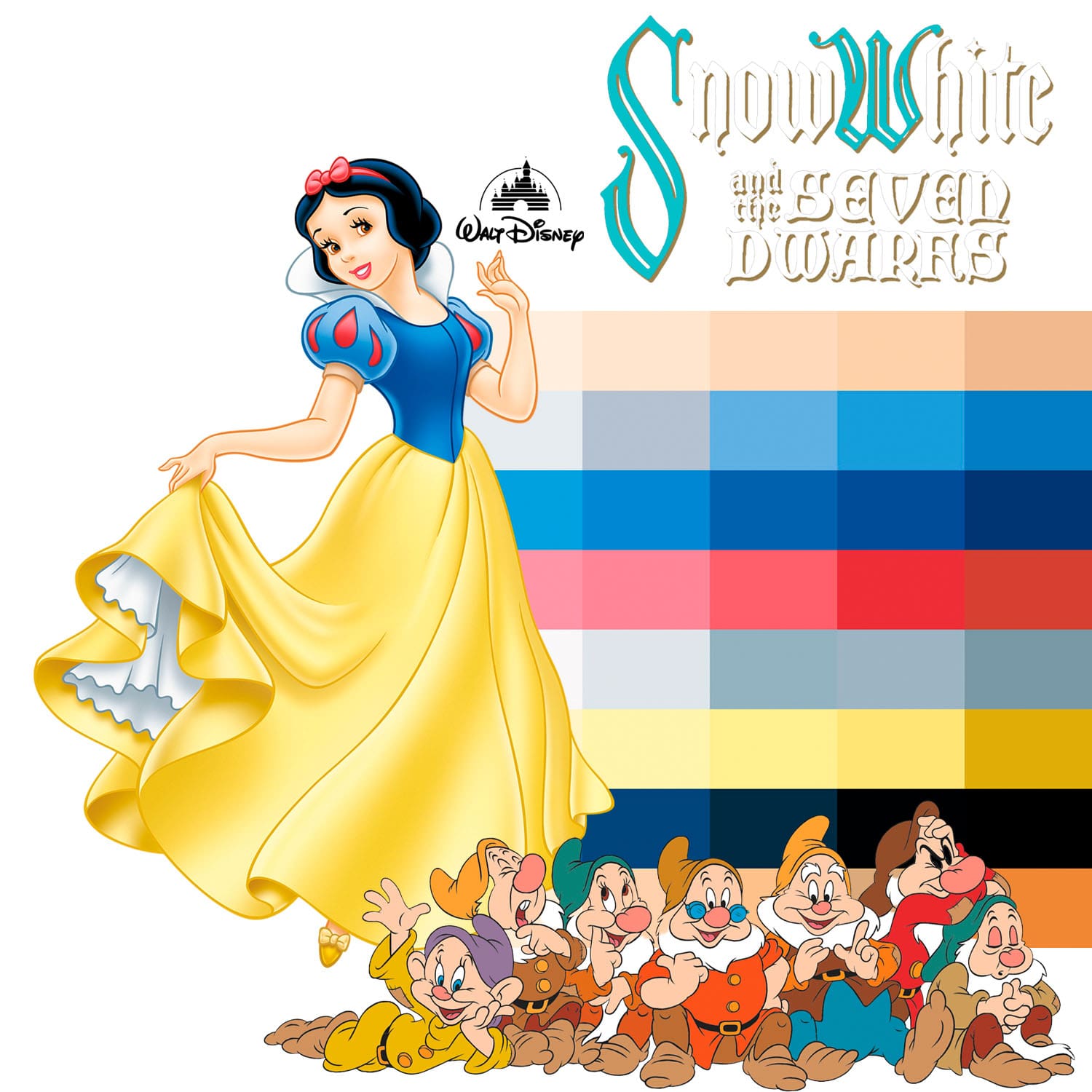
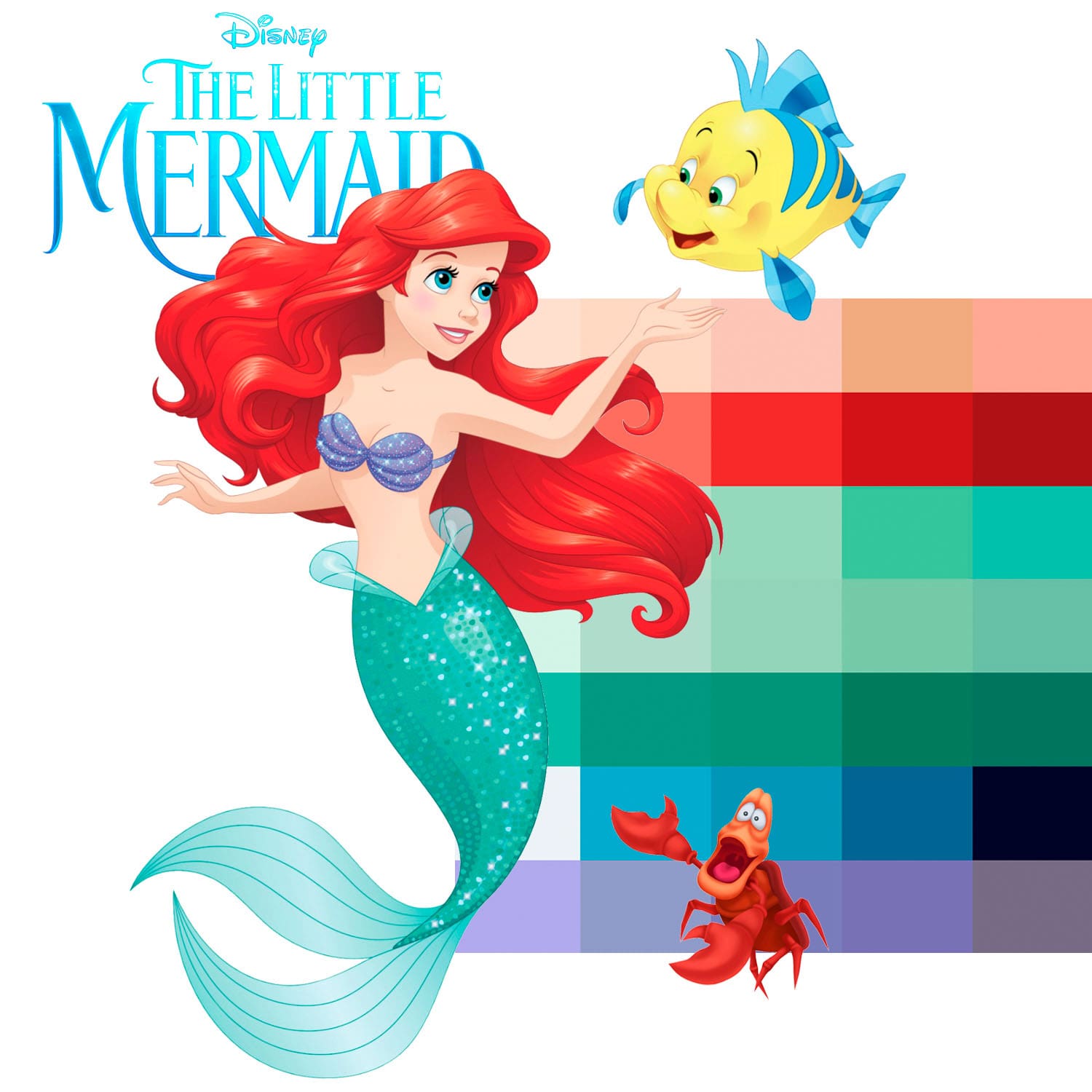
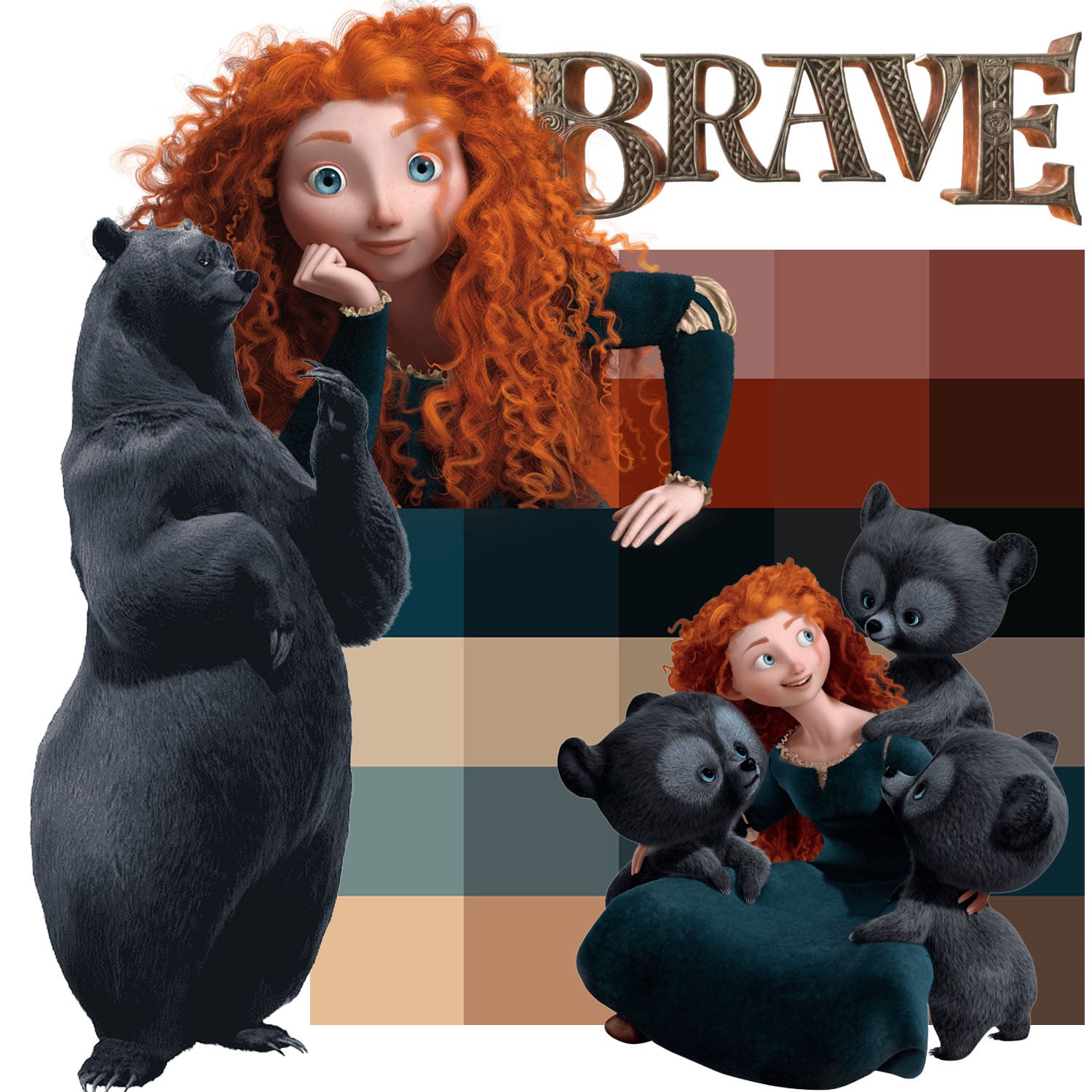
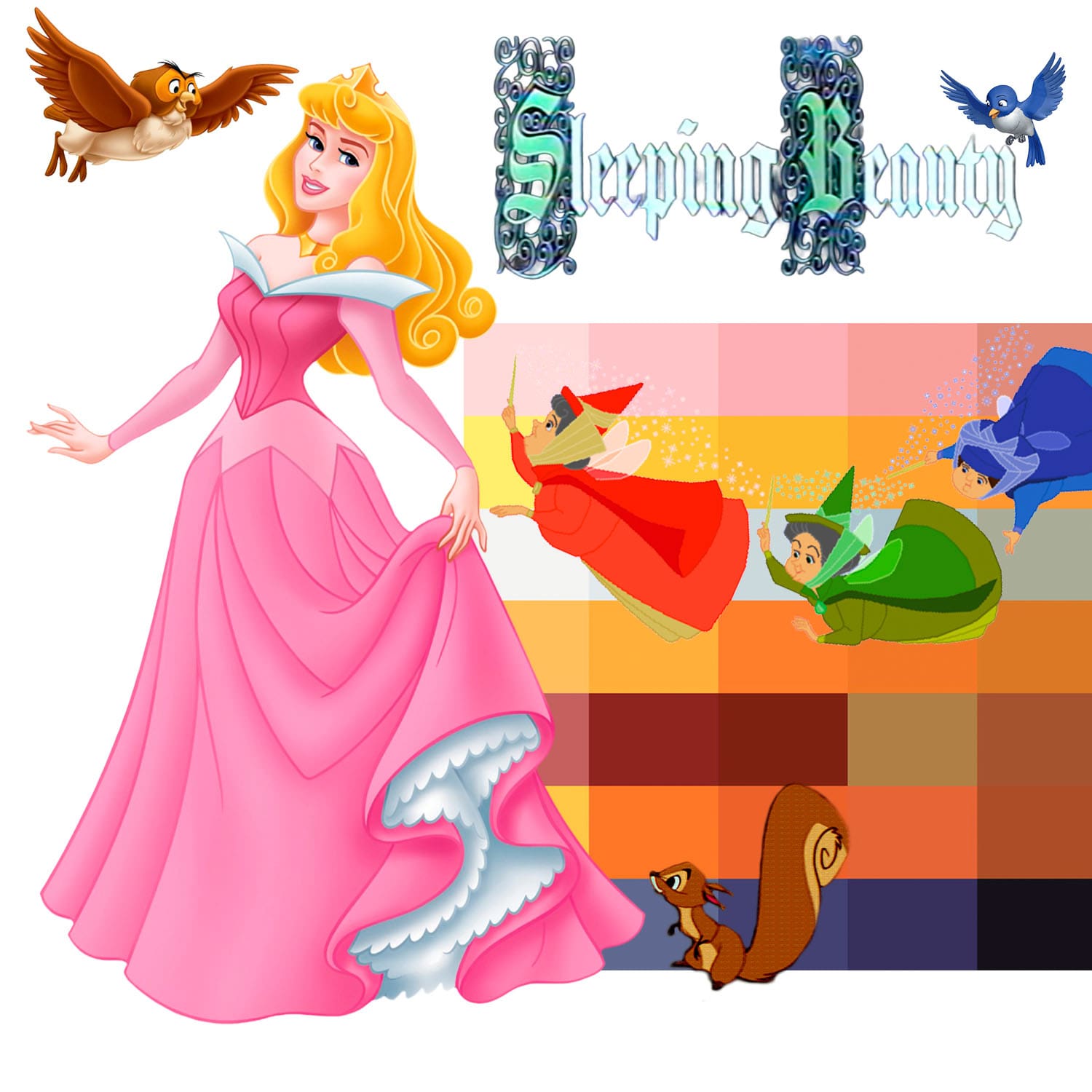
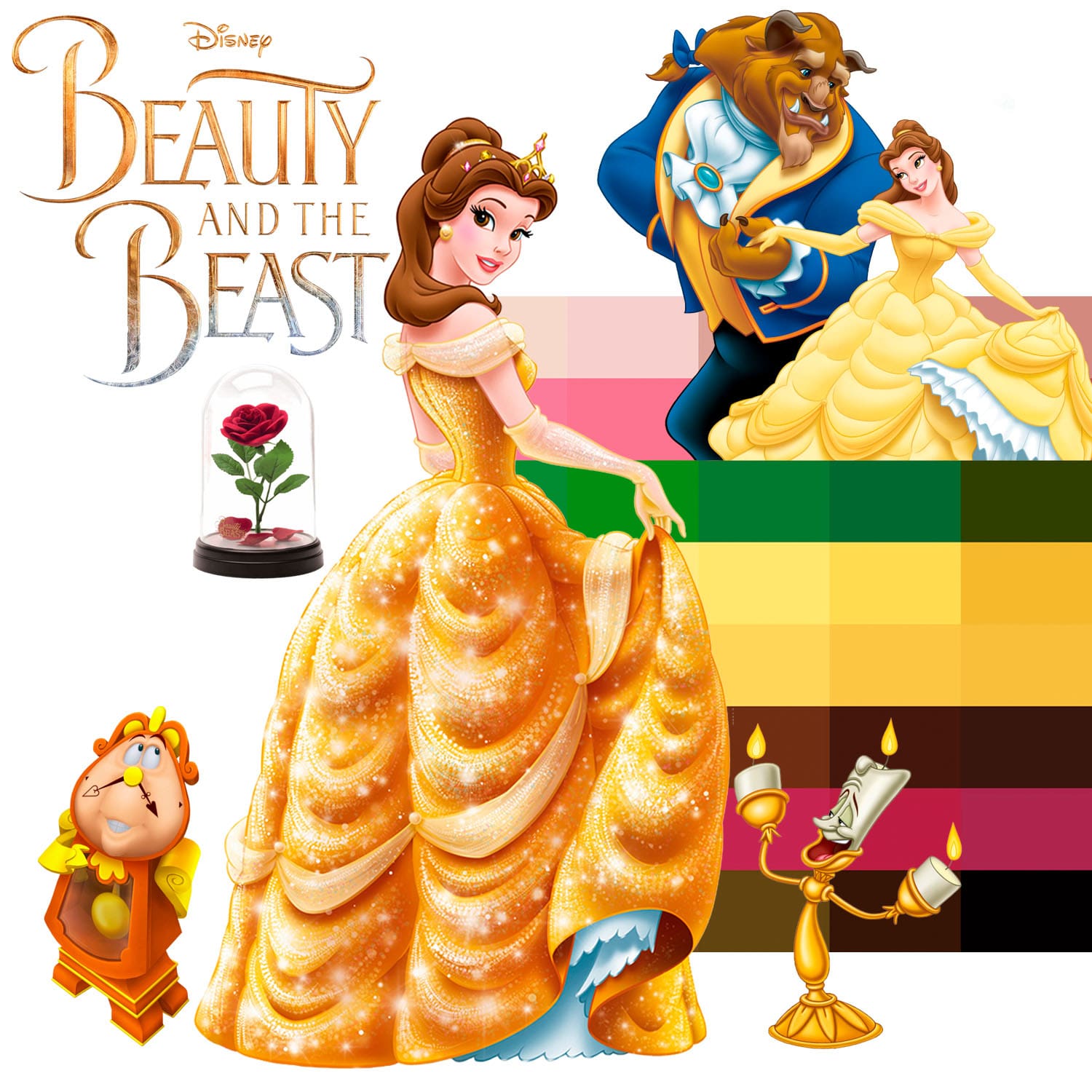
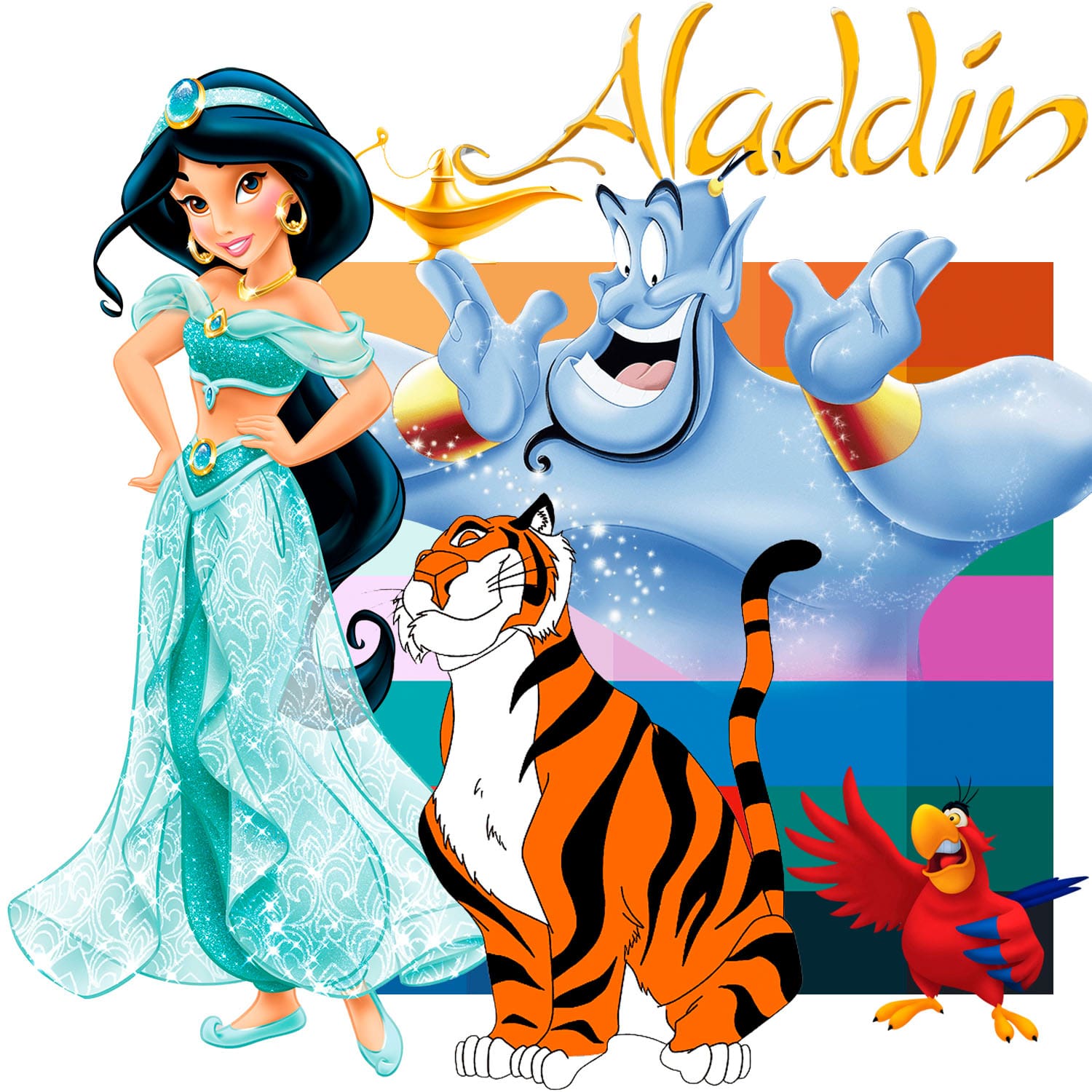
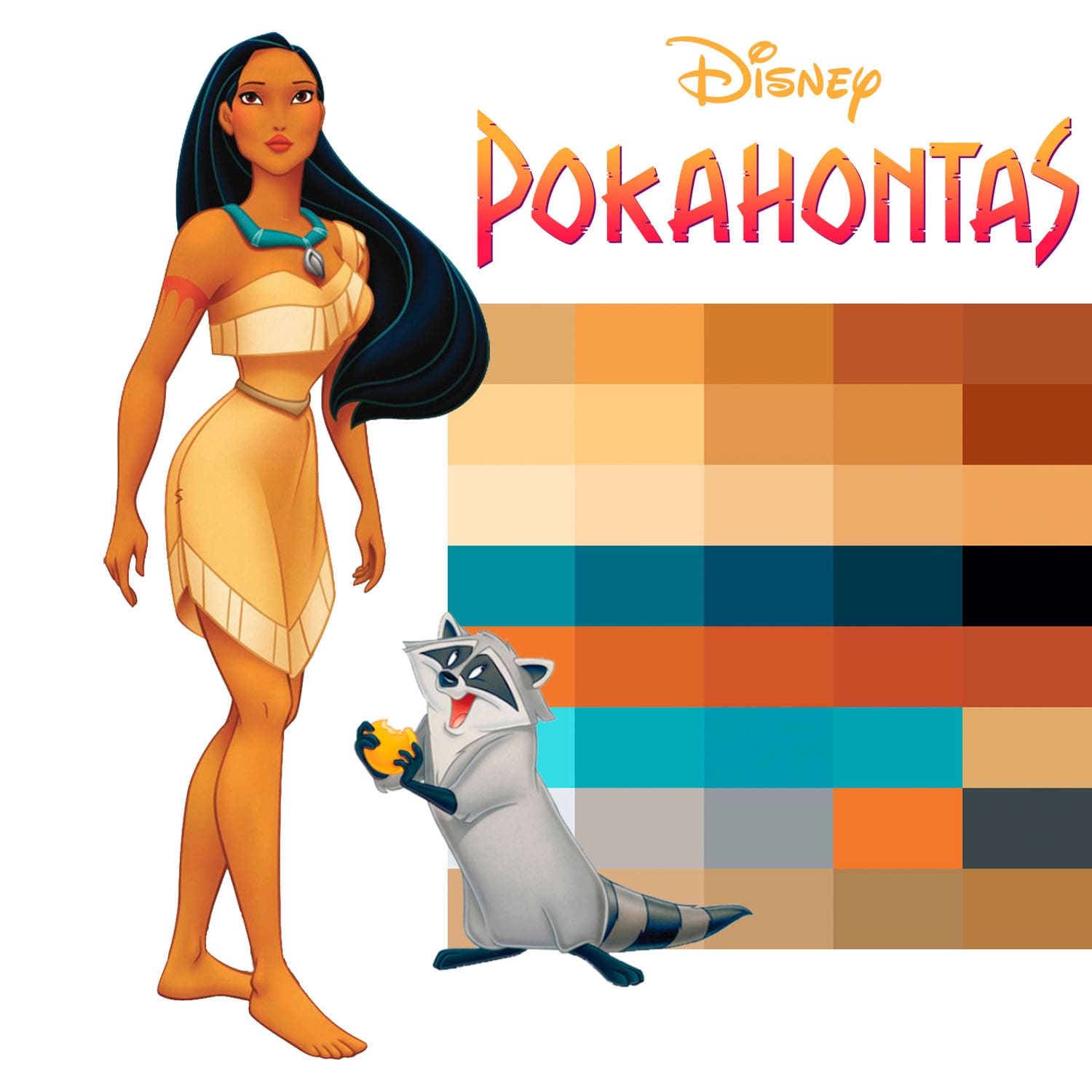
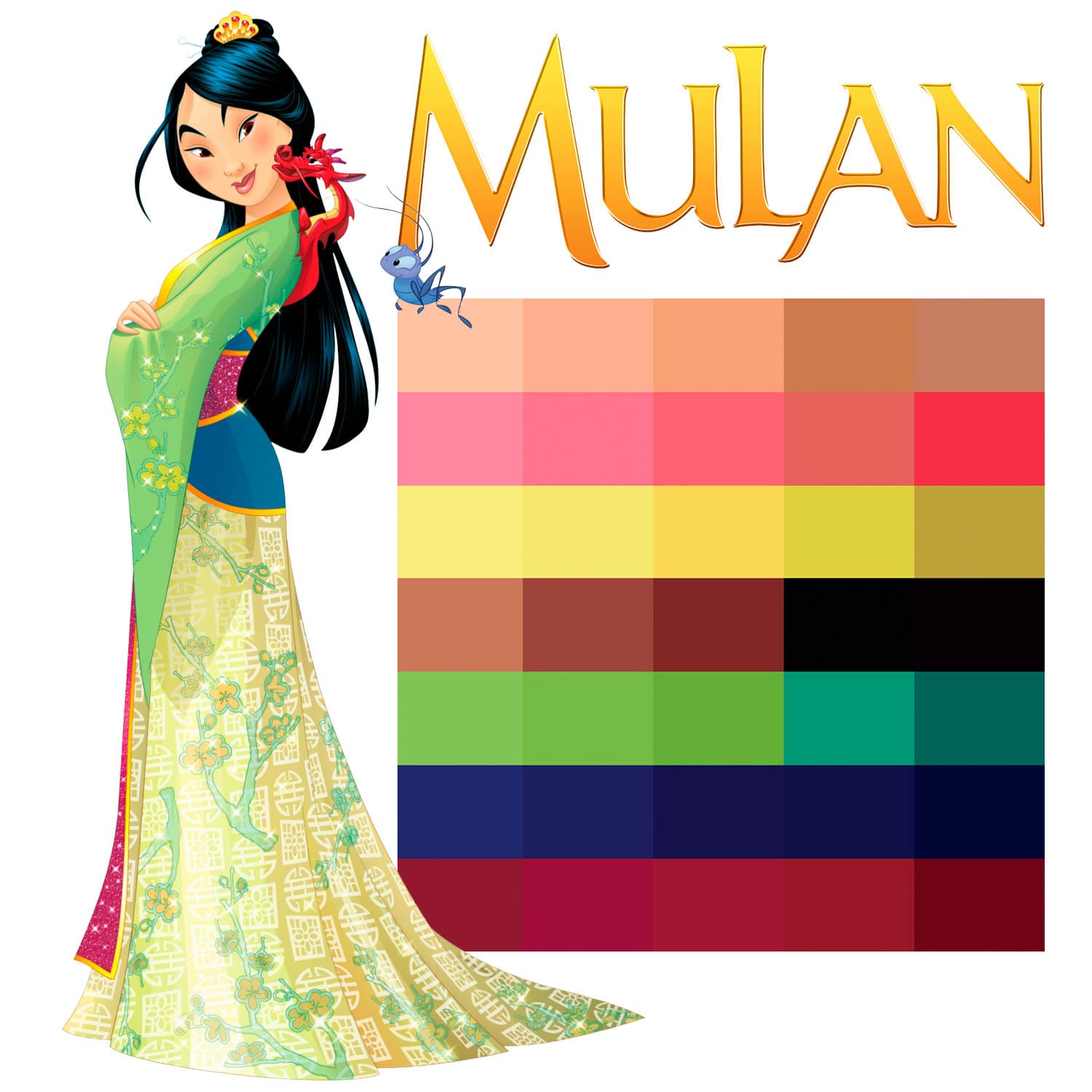
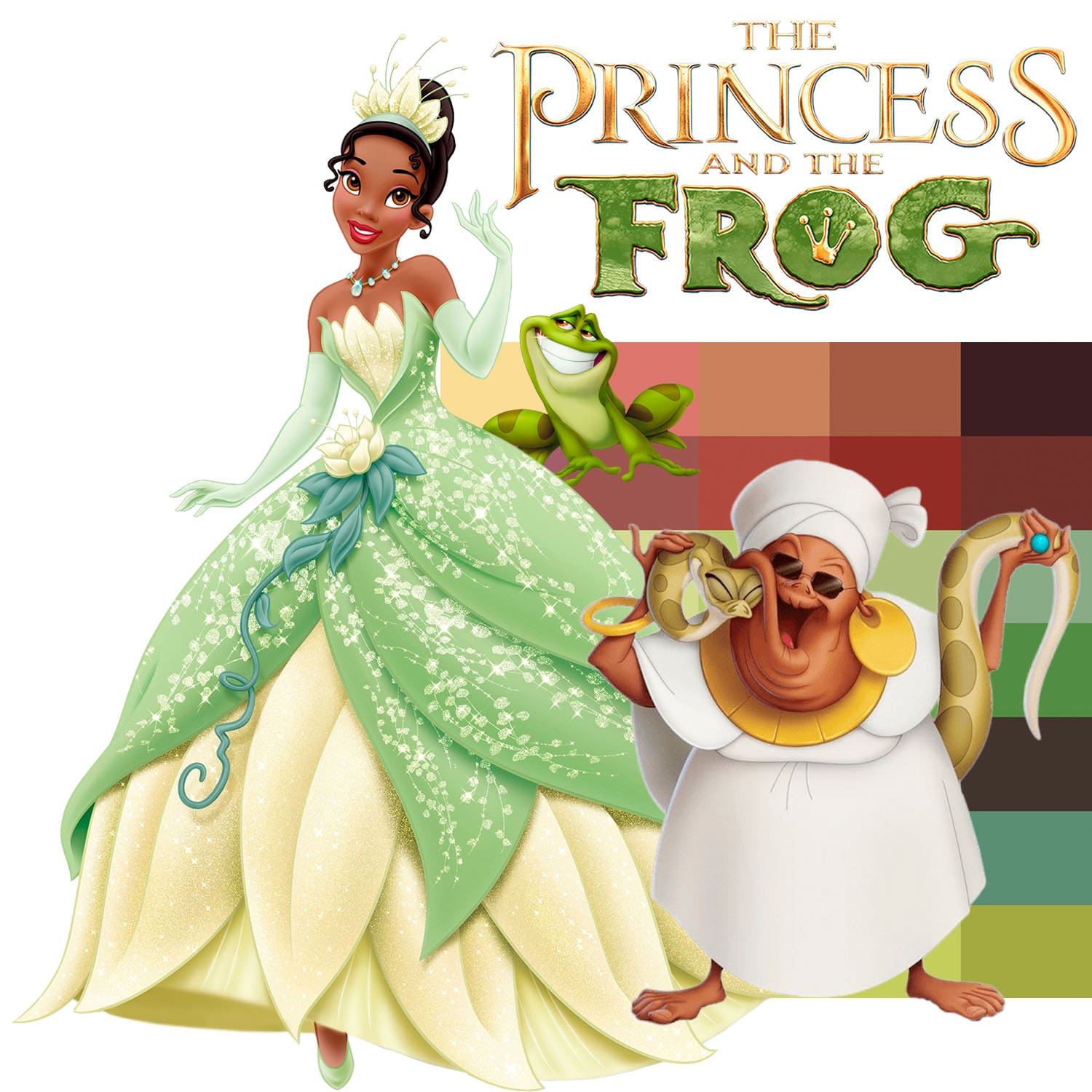
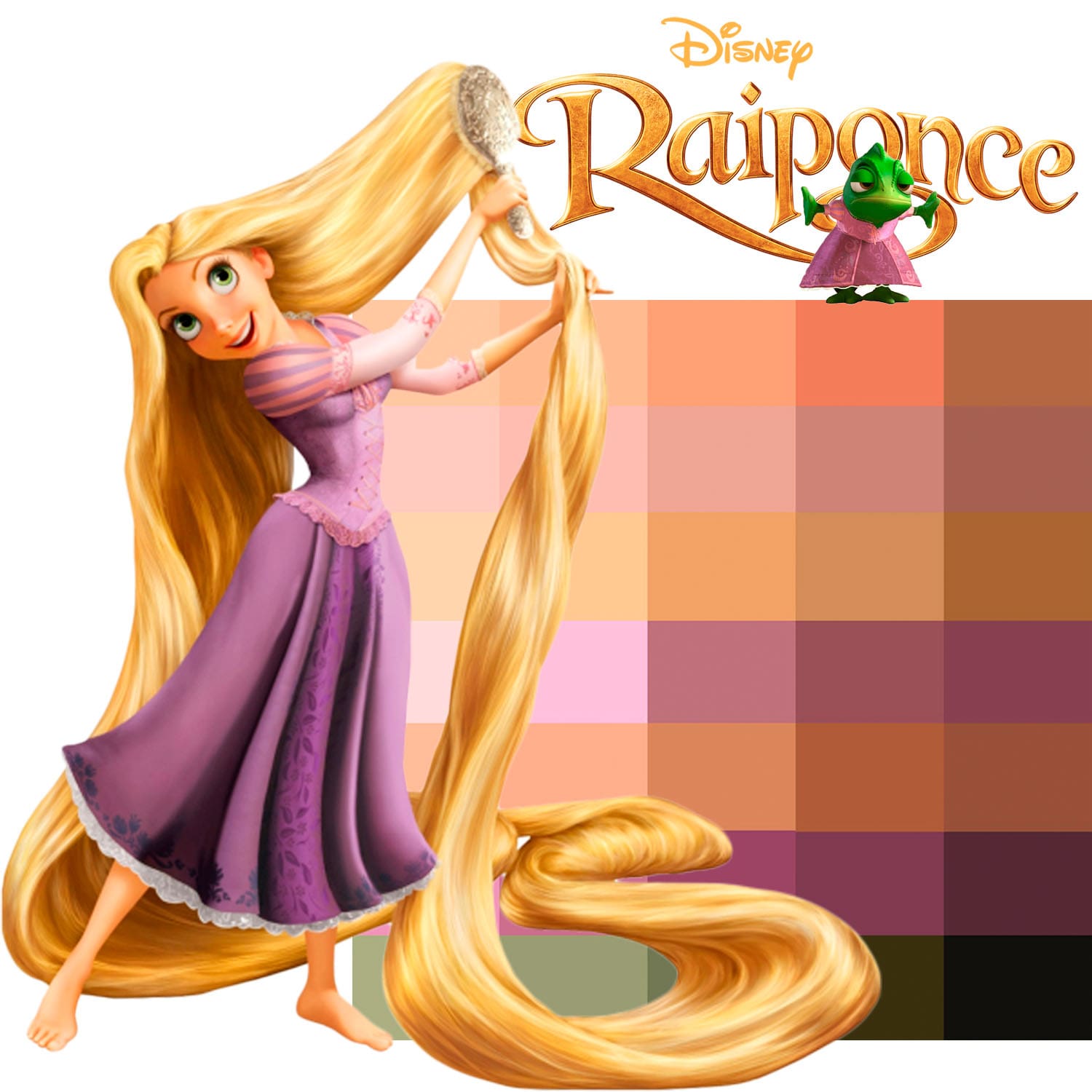
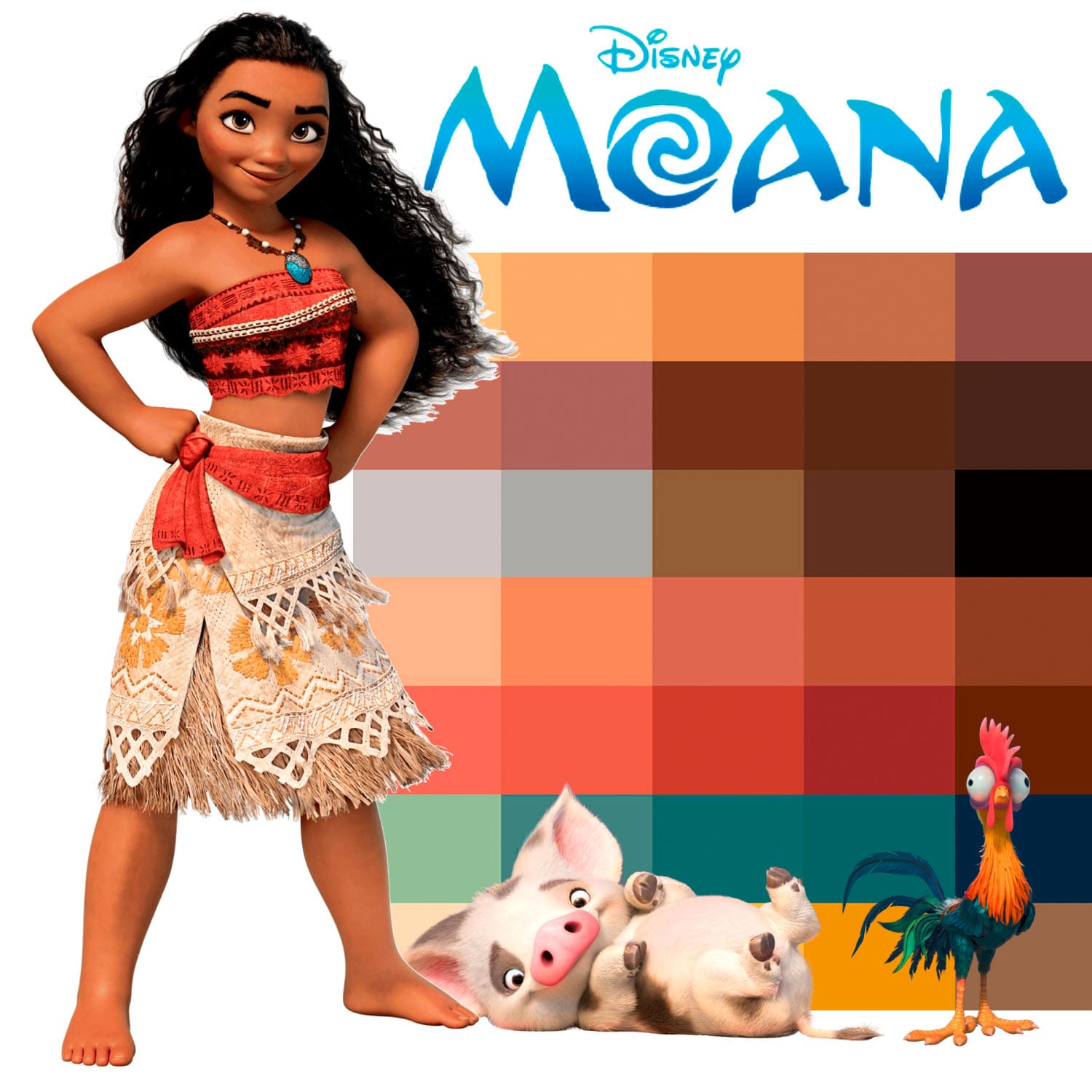
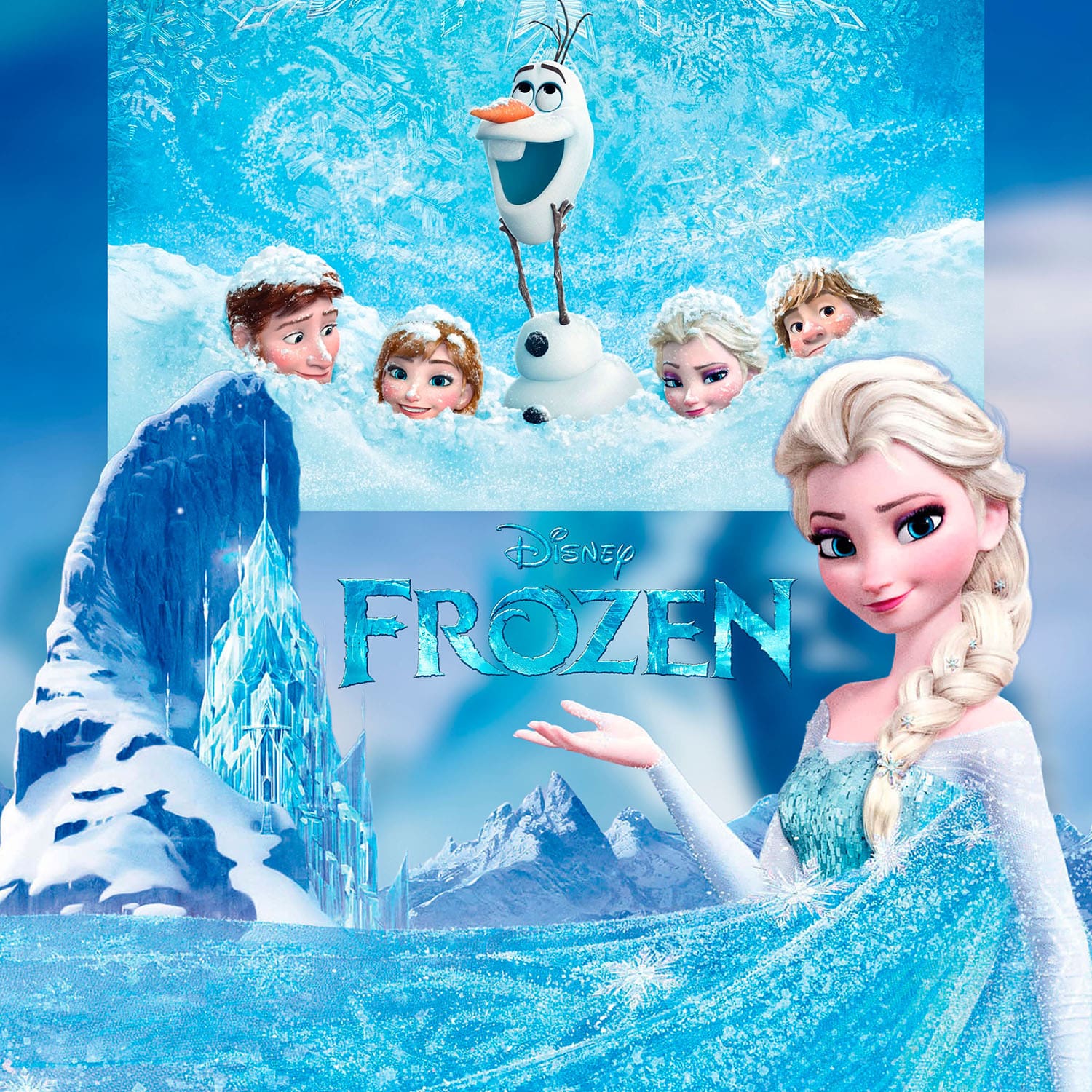
Villains & The Dark Palette
Opposite them, darkness. The villains of Disney arrive cloaked in shadow. Black, purple, and acid green define them, sharpening menace. Ursula, the unforgettable sea witch, is draped in violet excess—her machiavellian nature voiced with unforgettable verve in French by Micheline Dax. Maleficent’s black and violet flames made her a gothic archetype, while Scar’s muted tones and piercing green eyes painted the rot of betrayal. Here, color is morality itself: to the child’s eye, red and blue are safety, purple and black are threat.
Disney’s villains are often dressed in black, purple, or acid green, colors that visually separate them from heroes.
- Ursula in The Little Mermaid is enveloped in purple, a shade of deception and excess. In the French version, her unforgettable voice was brought to life by Micheline Dax, who gave the sea witch both grandeur and menace.
- Maleficent, draped in black and violet flames, became the very definition of gothic evil.
- Scar, shaded with darker, muted browns and green eyes, reveals the corruption behind his royal claim.
Through color, Disney did not simply illustrate — he coded morality into visual memory.
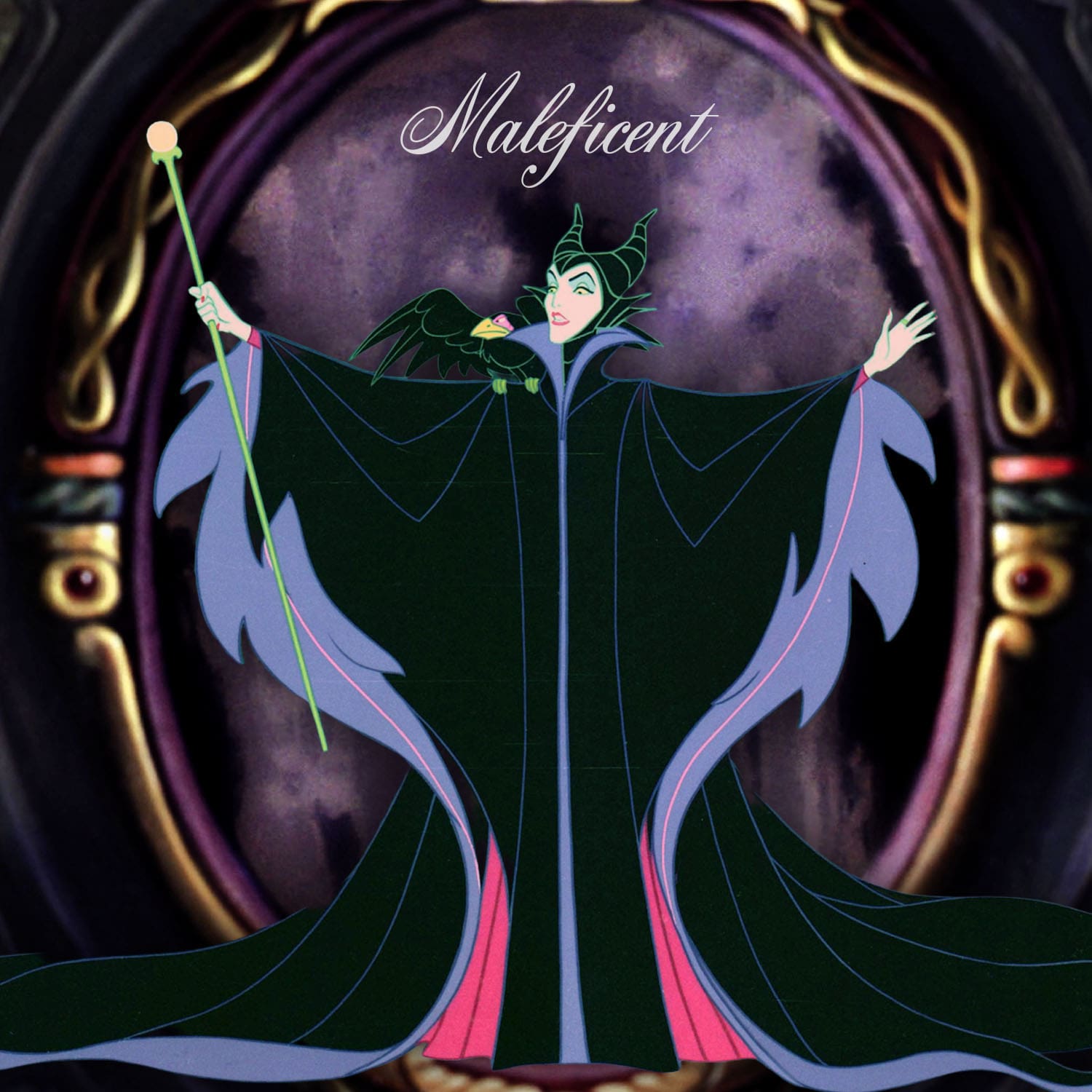
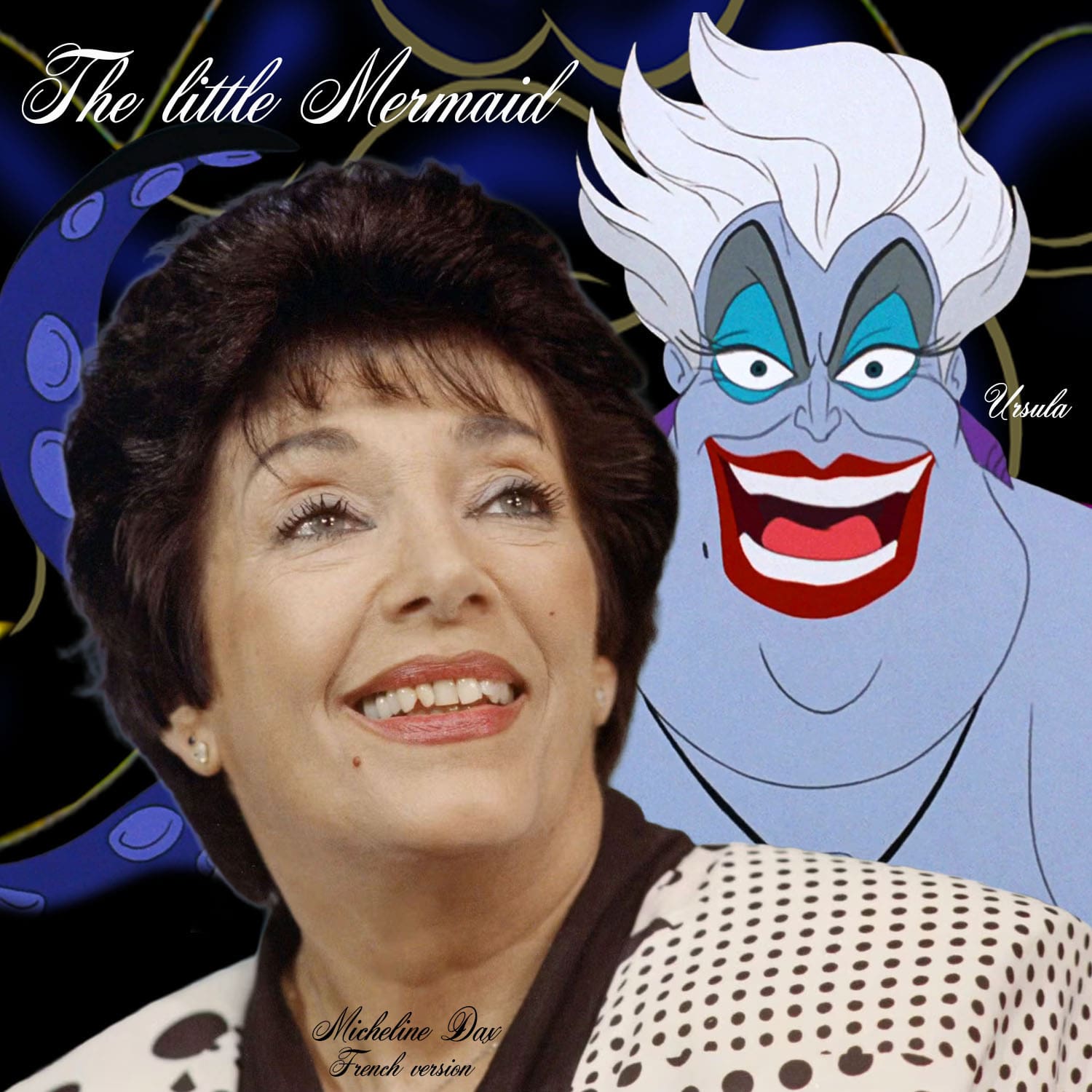
The Use of Color in Disney Parks
And within this code, some hues became signatures. Red, the eternal companion of Mickey and Minnie Mouse, signals vitality and joy. Yet it was blue that became Disney’s true emblem—his color of trust, enchantment, and destiny. From Cinderella’s ball gown to Elsa’s icy silhouette, blue carried the weight of magic itself. Gold and yellow, too, became his light of optimism: Belle’s gown, Simba’s savannahs, the fireworks crowning the castles. Through these tones, Walt Disney created not simply images but an identity, instantly recognizable across borders and decades.
This language extends beyond cinema into the very architecture of experience. In Disneyland, the castle rises in rose and blue, a pastel reliquary that invites passage into dream. Each land unfolds in carefully orchestrated palettes: the lush greens and ochres of Adventureland, the metallic silvers and cool blues of Tomorrowland, the storybook pastels of Fantasyland. Visitors do not simply walk through attractions—they move through chapters of a chromatic manuscript.
Disneyland and its descendants are painted with the same chromatic grammar.
- The pink and blue castle, a vision of enchantment, greets visitors with a palette that whispers fairy tale.
- Thematic lands are distinguished by carefully orchestrated tones:
- Adventureland with its earthy greens and tropical warmth,
- Tomorrowland with its silvers, whites, and futuristic blues,
- Fantasyland in pastel harmony, echoing storybooks.
Every shade serves one purpose: to immerse visitors in a world where reality bends into dream.
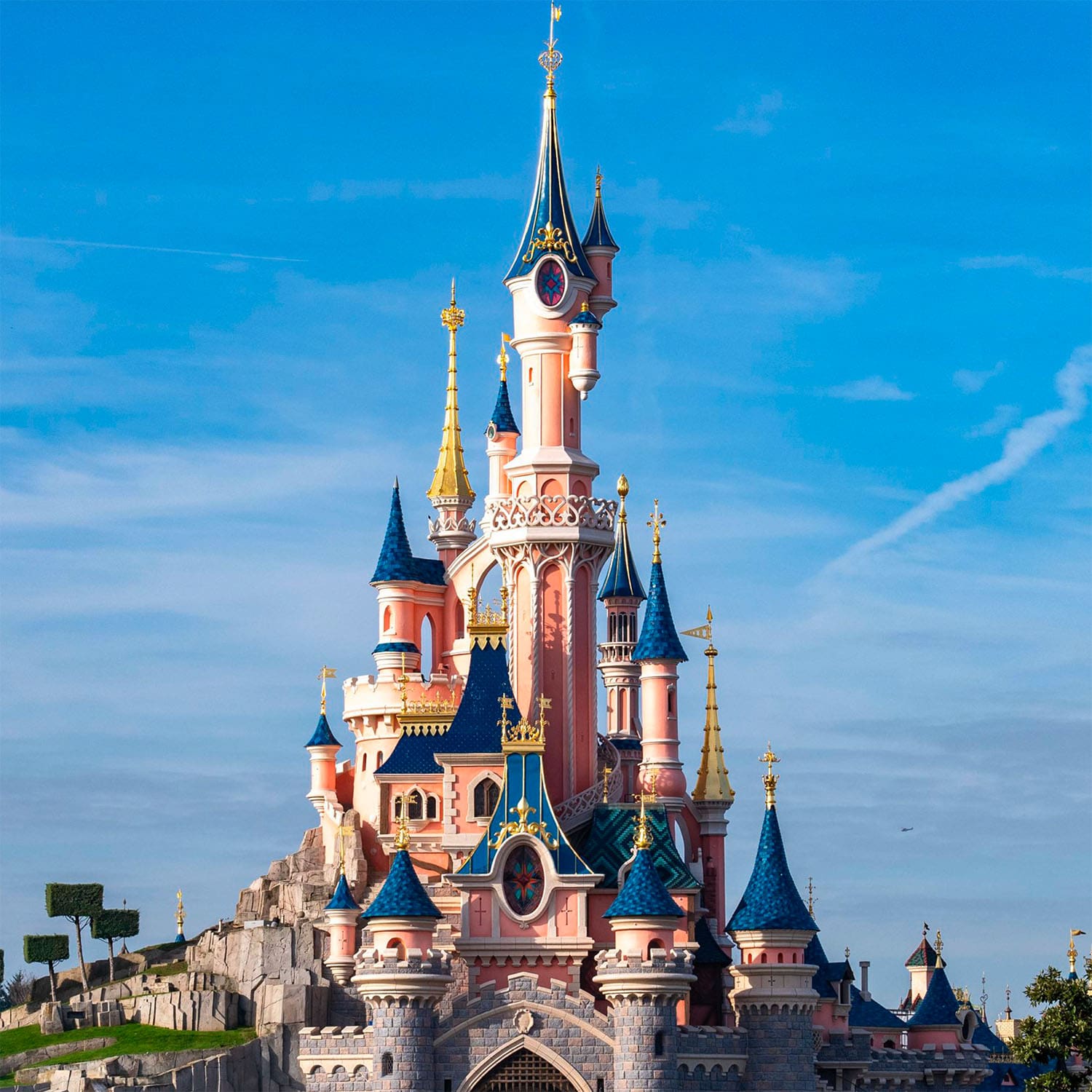
The Emblematic Colors of Walt Disney
Disney frequently relied on recurring hues to cement his identity:
- Red: Eternal companion of Mickey and Minnie Mouse — a bold, joyous declaration of life.
- Blue: Ultimately the most dominant Disney color, associated with magic, serenity, and trust. Elsa’s ice-blue dress in Frozen became a global icon of enchantment.
- Yellow and Gold: The glow of optimism, found in Belle’s gown, Simba’s savannah, or the fireworks above Cinderella’s Castle.
These tones became not just choices, but a universal code of recognition, weaving Disney into collective memory.
The Eternal Dream
Walt Disney gave more than stories; he gave a visual heritage etched into the imagination. His colors sparkle with innocence, courage, menace, and wonder. They survive not as decoration but as testimony, shimmering like fragments of stained glass that refract childhood long after childhood ends.
Walt Disney gave us more than stories — he gave us a visual heritage of colors that live in memory long after childhood ends. His worlds sparkle with innocence, danger, courage, and wonder. To step into his universe is to feel one’s eyes widen like a child’s, dazzled by a symphony of colors.
If Disney gave us dreams, he gave them through color. His code remains intact, still deciphered by each generation that enters his kingdom and leaves with eyes widened, illuminated.
